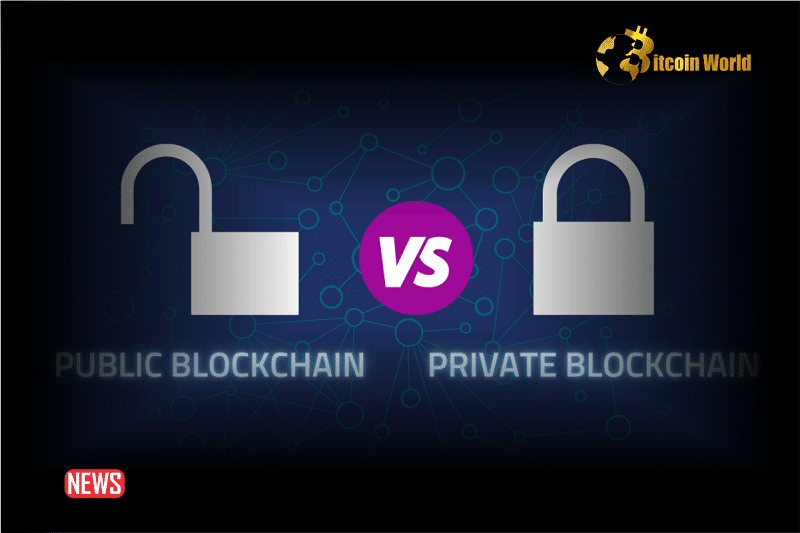


–>
Blockchains are decentralized and distributed ledgers that can record any information including financial transactions across a network of computers.
A block is an information system that holds a group of transactions or recordings in chronological order and is connected to other blocks, forming a chain. Hence, the name of the technology is ‘blockchain.’
Cryptocurrencies – functioning on blockchains – serve as digital currencies to record and execute transactions.
Cryptocurrencies or ‘digital currencies’ are specific applications of blockchain technology, which are decentralized ledgers recording various transactions.
Understanding The Blockchain Technology
Blockchain is a novel and promising technology that promises to revolutionize the industry of finance and other sectors such as logistics, databases and many more.
Blockchain stands upon three main pillars or principles – decentralization, transparency and superior security.
With blockchain technology powering digital currencies such as Bitcoin and Ethereum, it is possible to transact money without middlemen such as banks or any other financial institutions.
To achieve this, blockchain technology employs a trustless consensus mechanism.
The consensus mechanism is a computer code that does not require humans to trust the counterparty when sending or receiving digital currencies called, ‘coins.’
These coins are called cryptocurrencies, as the blockchain is protected using cryptographic hashing.
Let’s delve into the fundamental principles of blockchain technology.
Decentralization
Blockchain operates on a network of computers called, ‘nodes,’ and each of them holds the same copy of the ledger with recordings of transactions.
They compare their copies of blocks to reach a consensus and quickly identify any inefficiencies or fraud, making it almost impossible to hack the network.
As a result, the entire blockchain isn’t under the control of a single entity – instead, consensus on transaction validity is achieved through the majority of nodes.
Decentralization is a cornerstone of all public blockchain networks, as it eliminates the need for a central governing entity.
Transparency
All the information about transactions on the blockchain is visible to all participants in the network.
Once a block is added to the chain, it becomes immutable – meaning no one can modify it.
This ensures that information is transparent and nothing is hidden or can be changed to manipulate the information. No one can delete any information from the blockchain either.
Security And Consensus Mechanism
Blockchain technology employs cryptographic techniques to ensure the security of transactions.
The chain is resistant to fraud and tampering because of these hashing algorithms.
Adding a new block to the chain is only possible if nodes on the network all agree that the transaction is valid.
Consensus mechanisms vary depending on the algorithms. The most popular consensus mechanisms are POW (proof-of-work) and POS (proof-of-stake).
Bitcoin uses the POW mechanism while Ethereum, which is the second most popular cryptocurrency, uses the POS mechanism.
Public Blockchains
Public blockchains are decentralized networks where transactions are transparent and visible to all participants or non-participants using specialized tools.
The key difference between public and private chains is their availability.
Public blockchains allow global participation and various consensus mechanisms for security and are often associated with cryptocurrencies such as Bitcoin and Ethereum.
Private networks do not allow participation to anyone and are exclusively given by the group that operates the network.
Decentralization is the key feature of all public blockchain networks, allowing anyone to download and run the node with a copy of all blocks.
The majority of altcoins are public blockchains, including Litecoin, Bitcoin Cash, Ethereum Classic and many more.
Read Also: JPMorgan’s Ambitious Expansion With JPM Coin In Blockchain Transactions
Private Blockchains
Unlike public blockchain networks, private blockchains are centralized networks where access is restricted to authorized participants.
Private blockchains are usually operated by specific organizations or groups of people and prioritize privacy, efficiency and control governance.
These characteristics make private blockchains suitable for enterprise applications, supply chain management, consortiums and more.
Some popular private blockchains include Hyperledger Fabric, R3 Coda, Quorum, Multichain and many more.
Factors To Consider When Choosing
Before deciding which type of blockchain suits your needs, several factors need to be considered.
Security Requirements
The sensitivity of the data that needs to be recorded and saved on the blockchain is the main concern for deciding which type of blockchain to choose.
If the information is confidential, then a private network may be considered. Understand the impact of the potential impact of data exposure, unauthorized access or tampering.
Personal information and financial information are highly sensitive data you do not want to expose to anyone else.
These types of data usually require stronger security measures and high levels of privacy.
Government And Control
Governance defines who oversees the network and involves deciding on centralization or decentralization desired.
Public chains have no central authority and are fully decentralized, allowing public participation. Private blockchains offer more centralized control, restricting access to authorized entities.
Companies and organizations will mostly choose private blockchains to ensure the sensitive data is not exposed to outside parties, ensuring integrity and a seamless decision-making process.
Scalability Needs
Another crucial part before deciding on your preferred type of blockchain network is to consider the current and future growth expectations of blockchain applications.
The blockchain will have to handle increasing transaction volumes efficiently, and it is critical to ensure that blockchain can accommodate growth without compromising performance or transaction speeds.
Well-developed and maintained private networks can be super-efficient with high speeds and low costs, while public blockchains are usually slower and require transaction fees but are more secure.
Conclusion
Blockchains are amazing new ways of conducting financial transactions without middlemen, ensuring decentralization, security and transparency.
Public blockchains are open to anyone who wants to participate and offer the availability of information.
Private blockchains are networks that are controlled not by the public but instead by groups of people or organizations.
Private blockchains are perfect for organizations to ensure sensitive data is not exposed outside the company.
The choice between private and public blockchain depends on the needs and purposes of the user. The main considerations include security, data privacy, scalability and efficiency.
Ultimately, it all comes down to the personal needs of the user, and both can be very useful and efficient.
- SEO Powered Content & PR Distribution. Get Amplified Today.
- PlatoData.Network Vertical Generative Ai. Empower Yourself. Access Here.
- PlatoAiStream. Web3 Intelligence. Knowledge Amplified. Access Here.
- PlatoESG. Carbon, CleanTech, Energy, Environment, Solar, Waste Management. Access Here.
- PlatoHealth. Biotech and Clinical Trials Intelligence. Access Here.
- Source: https://bitcoinworld.co.in/public-versus-private-blockchains-which-one-is-the-right-model-for-your-needs/
- 16
- a
- About
- access
- achieve
- achieved
- across
- added
- algorithms
- All
- allow
- Allowing
- almost
- also
- Altcoins
- amazing
- ambitious
- an
- and
- any
- anyone
- app
- applications
- ARE
- as
- associated
- Authority
- authorized
- availability
- available
- Azure
- Banks
- BE
- because
- becomes
- before
- between
- binance
- Bitcoin
- Bitcoin Cash
- BitcoinWorld
- block
- blockchain
- blockchain applications
- blockchain network
- blockchain technology
- blockchains
- blocks
- both
- but
- by
- called
- CAN
- Cash
- category
- central
- central authority
- centralization
- centralized
- chain
- chains
- changed
- characteristics
- choice
- choose
- Classic
- CO
- cobalt
- code
- Coin
- Coins
- comes
- company
- compromising
- computer
- computers
- concern
- conducting
- connected
- Consensus
- Consensus Mechanisms
- Consider
- considered
- Control
- controlled
- copies
- cornerstone
- Costs
- Counterparty
- CPU
- critical
- crucial
- crypto
- cryptocurrencies
- cryptocurrency
- cryptographic
- currencies
- Current
- data
- data privacy
- databases
- Decentralization
- decentralized
- defines
- delve
- depending
- depends
- desired
- difference
- digital
- digital currencies
- Digital Money
- distributed
- do
- does
- down
- download
- each
- efficiency
- efficient
- efficiently
- either
- else
- ensure
- ensures
- ensuring
- Enterprise
- entire
- entities
- entity
- ethereum
- exclusively
- execute
- expansion
- expectations
- exposure
- fabric
- Factors
- Failed
- far
- Feature
- Fees
- finance
- financial
- financial information
- Financial institutions
- For
- fraud
- from
- fully
- functioning
- fund
- fundamental
- future
- future growth
- Gaming
- given
- Global
- governance
- governing
- Group
- Growth
- hack
- handle
- hashing
- Have
- hence
- hidden
- High
- highly
- holds
- HTML
- http
- HTTPS
- Humans
- Hyperledger
- identify
- if
- Immutable
- Impact
- impossible
- in
- include
- Including
- Increase
- industry
- inefficiencies
- information
- instead
- institutions
- integrity
- into
- iPhone
- Is
- IT
- JPM coin
- Key
- Ledger
- levels
- Litecoin
- logistics
- Low
- made
- main
- Majority
- make
- Making
- management
- many
- May
- meaning
- measures
- mechanism
- mechanisms
- model
- modify
- money
- more
- most
- Most Popular
- mostly
- multichain
- name
- need
- needs
- network
- networks
- New
- no
- node
- nodes
- not
- nothing
- novel
- now
- of
- offer
- often
- on
- One
- only
- open
- operated
- operates
- or
- order
- organizations
- Other
- outside
- part
- participants
- participate
- participation
- parties
- pension
- People
- perfect
- performance
- personal
- pillars
- plato
- plato data intelligence
- platodata
- platogaming
- Popular
- PoS
- possible
- potential
- PoW
- principles
- prioritize
- privacy
- private
- Process
- Profit
- promises
- promising
- Proof-of-Stake
- Proof-of-Work
- protected
- public
- public blockchain
- purposes
- quickly
- R3
- reach
- receiving
- record
- recorded
- recording
- require
- resistant
- restricted
- result
- revolutionize
- right
- Run
- same
- saved
- Scalability
- seamless
- second
- Sectors
- secure
- security
- Security Measures
- sensitive
- serve
- several
- single
- specialized
- specific
- stands
- stronger
- such
- suitable
- superior
- supply
- supply chain
- supply chain management
- system
- tag
- techniques
- Technology
- Teens
- test
- that
- The
- their
- Them
- then
- These
- this
- three
- Through
- to
- tools
- transact
- transaction
- transaction fees
- Transactions
- Transparency
- transparent
- Trust
- trustless
- tutorial
- type
- types
- unauthorized
- under
- Understand
- unveils
- upon
- User
- uses
- using
- usually
- valid
- various
- Versus
- very
- volumes
- W3
- want
- wants
- ways
- when
- where
- while
- WHO
- will
- with
- without
- you
- your
- zephyrnet











